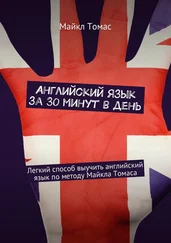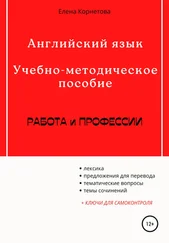Елена Беликова - Английский язык
Здесь есть возможность читать онлайн «Елена Беликова - Английский язык» весь текст электронной книги совершенно бесплатно (целиком полную версию без сокращений). В некоторых случаях можно слушать аудио, скачать через торрент в формате fb2 и присутствует краткое содержание. Жанр: Справочники, на русском языке. Описание произведения, (предисловие) а так же отзывы посетителей доступны на портале библиотеки ЛибКат.
- Название:Английский язык
- Автор:
- Жанр:
- Год:неизвестен
- ISBN:нет данных
- Рейтинг книги:3 / 5. Голосов: 1
-
Избранное:Добавить в избранное
- Отзывы:
-
Ваша оценка:
- 60
- 1
- 2
- 3
- 4
- 5
Английский язык: краткое содержание, описание и аннотация
Предлагаем к чтению аннотацию, описание, краткое содержание или предисловие (зависит от того, что написал сам автор книги «Английский язык»). Если вы не нашли необходимую информацию о книге — напишите в комментариях, мы постараемся отыскать её.
Английский язык — читать онлайн бесплатно полную книгу (весь текст) целиком
Ниже представлен текст книги, разбитый по страницам. Система сохранения места последней прочитанной страницы, позволяет с удобством читать онлайн бесплатно книгу «Английский язык», без необходимости каждый раз заново искать на чём Вы остановились. Поставьте закладку, и сможете в любой момент перейти на страницу, на которой закончили чтение.
Интервал:
Закладка:
Erythrocyte is the mature acidophilic and denucleated RBC. Erythrocytes remain in the circulation approximately 120 days and are then recycled by the spleen, liver, and bone marrow.
reticular – сетчатый
sinusoids – синусоиды
granulocytes – гранулоциты
agranulocytes – агранулоциты
active – активный
yellow – желтый
glycoprotein – гликопротеин
erythropoietin – эритропоэтин
amount – количество
hemoglobin – гемоглобин
degenerating – дегенерирующие
condensed – сжатый
22. Hematopoietic tissue. Granulopoiesis, thrombopoiesis
Granulopoiesis is the process of granulocyte formation. Bone marrow stem cells differentiate into all three types of granulocytes.
Myeloblast is a cell that has a large spherical nucleus containing delicate euchromatin and several nucleoli. It has a basophilic cytoplasm and no granules. Myeloblasts divide differentiate to form smaller promyelocytes.
Promyelocyte is a cell that contains a large spherical indented nucleus with coarse condensed chromatin. The cytoplasm is basophilic and contains peripheral azurophi-lic granules.
Myelocyte is the last cell in this series capable of division. The nucleus becomes increasingly heterochromatic with subsequent divisions. Specific granules arise from the Golgi apparatus, resulting in neutrophilic, eosinophilic, and basophilic myelocytes.
Metamyelocyte is a cell whose indented nucleus exhibits lobe formation that is characteristic of the neutrophil, eos-inophil, or basophil. The cytoplasm contains azurophilic granules and increasing numbers of specific granules. This cell does not divide. Granulocytes are the definitive cells that enter the blood. Neutrophilic granulocytes exhibit an intermediate stage called the band neutrophil. This is the first cell of this series to appear in the peripheral blood.
It has a nucleus shaped like a curved rod or band.
Bands normally constitute 0,5–2 % of peripheral WBCs; they subsequently mature into definitive neutrophils.
Agranulopoiesis is the process of lymphocyte and mono-cyte for mation. Lymphocytes develop from bone marrow stem cells (lymphoblasts). Cells develop in bone marrow and seed the secondary lymphoid organs (e. g., tonsils, lymph nodes, spleen). Stem cells for T cells come from bone marrow, develop in the thymus and, subsequently, seed the secondary lym phoid organs.
Promonocytes differentiate from bone marrow stem cells (monoblasts) and multiply to give rise to monocytes.
Monocytes spend only a short period of time in the marrow before being released into the bloodstream.
Monocytes are transported in the blood but are also found in connective tissues, body cavities and organs.
Outside the blood vessel wall, they are transformed into macrophages of the mononuclear phagocyte system.
Thrombopoiesis, or the formation of platelets, occurs in the red bone marrow.
Megakaryoblast is a large basophilic cell that contains a U-shaped or ovoid nucleus with prominent nucleoli. It is the last cell that undergoes mitosis.
Megakaryocytes are the largest of bone marrow cells, with diameters of 50 mm or greater. They undergo 4–5 nuclear divi sions without concomitant cytopla-smic division. As a result, the megakaryocyte is a cell with polylobulated, polyploid nucleus and abundant granules in its cytoplasm. As megakaryocyte maturation proceeds, «curtains» of platelet demarcation vesicles form in the cytoplasm. These vesicles coalesce, become tubular, and eventually form platelet demarcation membranes. These membranes fuse to give rise to the membranes of the platelets.
A single megakaryocyte can shed (i. e., produce) up to 3,500 platelets.
capable – способный
spherical – сферический
indented – зазубренный
chromatin – хроматин
23. Arteries
Arteries are classified according to their size, the appearance of their tunica media, or their major function.
Large elastic conducting arteries include the aorta and its large branches. Unstained, they appear yellow due to their high con tent of elastin.
The tunica intima is composed of endothelium and a thin sub jacent connective tissue layer. An internal elastic membrane marks the boundary between the intima and media.
The tunica media is extremely thick in large arteries and con sists of circularly organized, fenestrated sheets of elastic tissue with interspersed smooth muscle cells. These cells are responsi ble for producing elastin and other extracellular matrix com ponents. The outermost elastin sheet is considered as the external elastic membrane, which marks the boundary between the media and the tunica adventitia.
The tunica adventitia is a longitudinally oriented collection of collagenous bundles and delicate elastic fibers with associated fibroblasts. Large blood vessels have their own blood supply (vasa vasorum), which consists of small vessels that branch profusely in the walls of larger arteries and veins. Muscular distributing arteries are medium-sized vessels that are characterized by their predominance of circularly arranged smooth muscle cells in the media interspersed with a few elastin compo nents. Up to 40 layers of smooth muscle may occur. Both internal and external elastic limiting membranes are clearly demonstrated. The intima is thinner than that of the large arteries.
Arterioles are the smallest components of the arterial tree. Generally, any artery less than 0,5 mm in diameter is considered to be a small artery or arteriole. A suben-dothelial layer and the inter nal elastic membrane may be present in the largest of these vessels but are absent in the smaller ones. The media is composed of several smooth muscle cell layers, and the adventitia is poorly devel oped. An external elastic membrane is absent.
endothelium – эндотелий
media – средняя
arteries – артерии
to be classified – классифицированный
according – соответственно
their – их
size – размер
appearance – вид
tunica – оболочка
major – главный
elastic – эластичный
conducting – проведение
arteries – артерии
to include – включать
aorta – аорта
branches – ветви
up to – до
layers – слои
smooth – гладкий
may – может
infima – внутренняя полость артерии
24. Capillaries
Capillaries are thin-walled, narrow-diameter, low-pressure vessels that generally permit easy diffusion across their walls. Most capillar ies have a cross-sectional diameter of 7 – 12 mm. They are composed of a simple layer of endothelium, which is the lining of the entire vas cular system, and an underlying basal lamina. They are attached to the surrounding tissues by a delicate reticulum of collagen. Associated with these vessels at various points along their length are specialized cells called pericytes. These cells, enclosed within their own basal lamina, which is continuous with that of the endothelium, contain contractile proteins and thus may be involved in the control of capillary dynamics. They may also serve as stem cells at times of vascular repair. Capillaries are generally divided into three types, according to the structure of their endothelial cell walls
Continuous (muscular, somatic) capillaries are formed by a single uninterrupted layer of endothelial cells rolled up into the shape of a tube and can be found in locations such as connective tissue, muscle, and nerve
Читать дальшеИнтервал:
Закладка:
Похожие книги на «Английский язык»
Представляем Вашему вниманию похожие книги на «Английский язык» списком для выбора. Мы отобрали схожую по названию и смыслу литературу в надежде предоставить читателям больше вариантов отыскать новые, интересные, ещё непрочитанные произведения.
Обсуждение, отзывы о книге «Английский язык» и просто собственные мнения читателей. Оставьте ваши комментарии, напишите, что Вы думаете о произведении, его смысле или главных героях. Укажите что конкретно понравилось, а что нет, и почему Вы так считаете.












